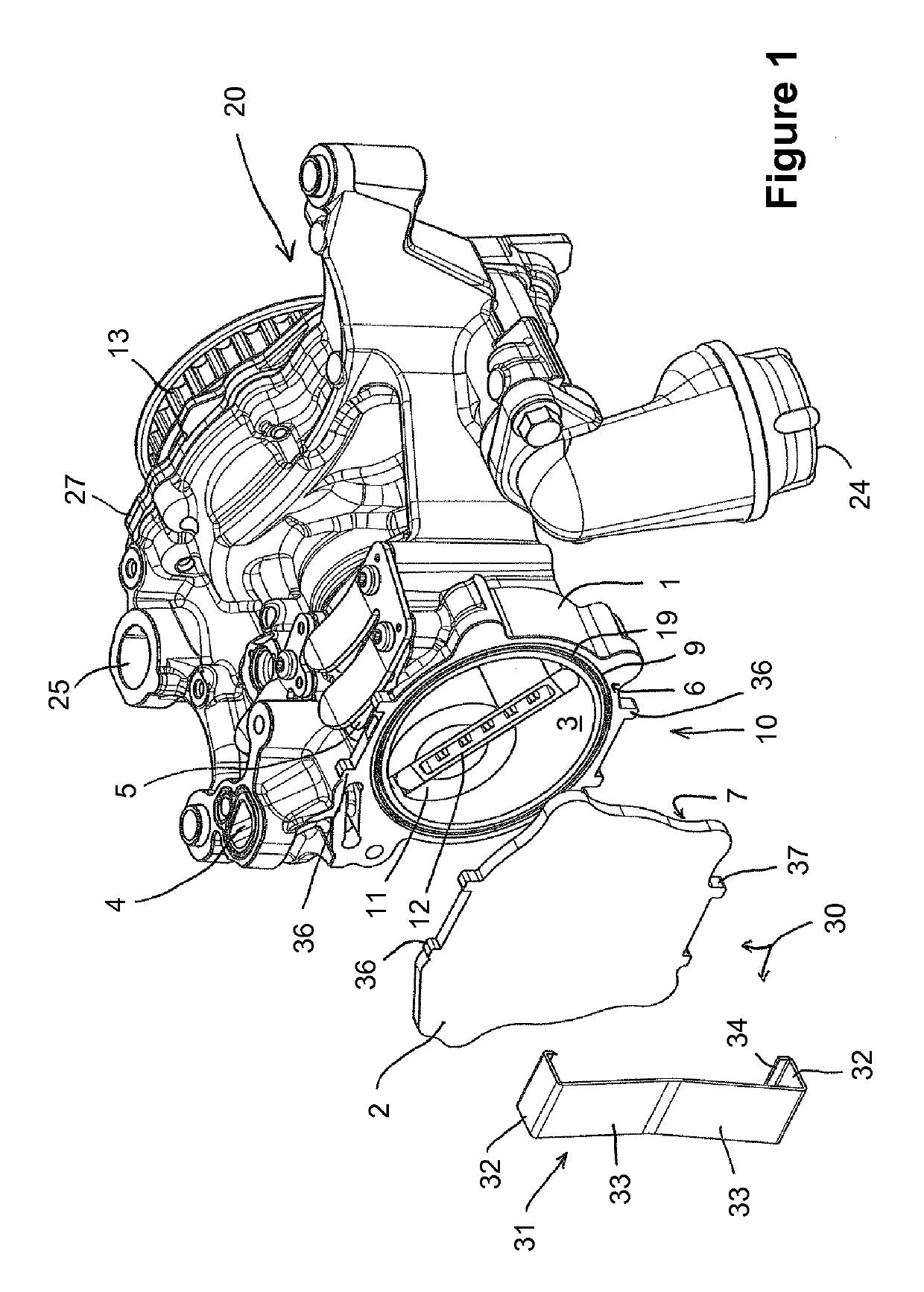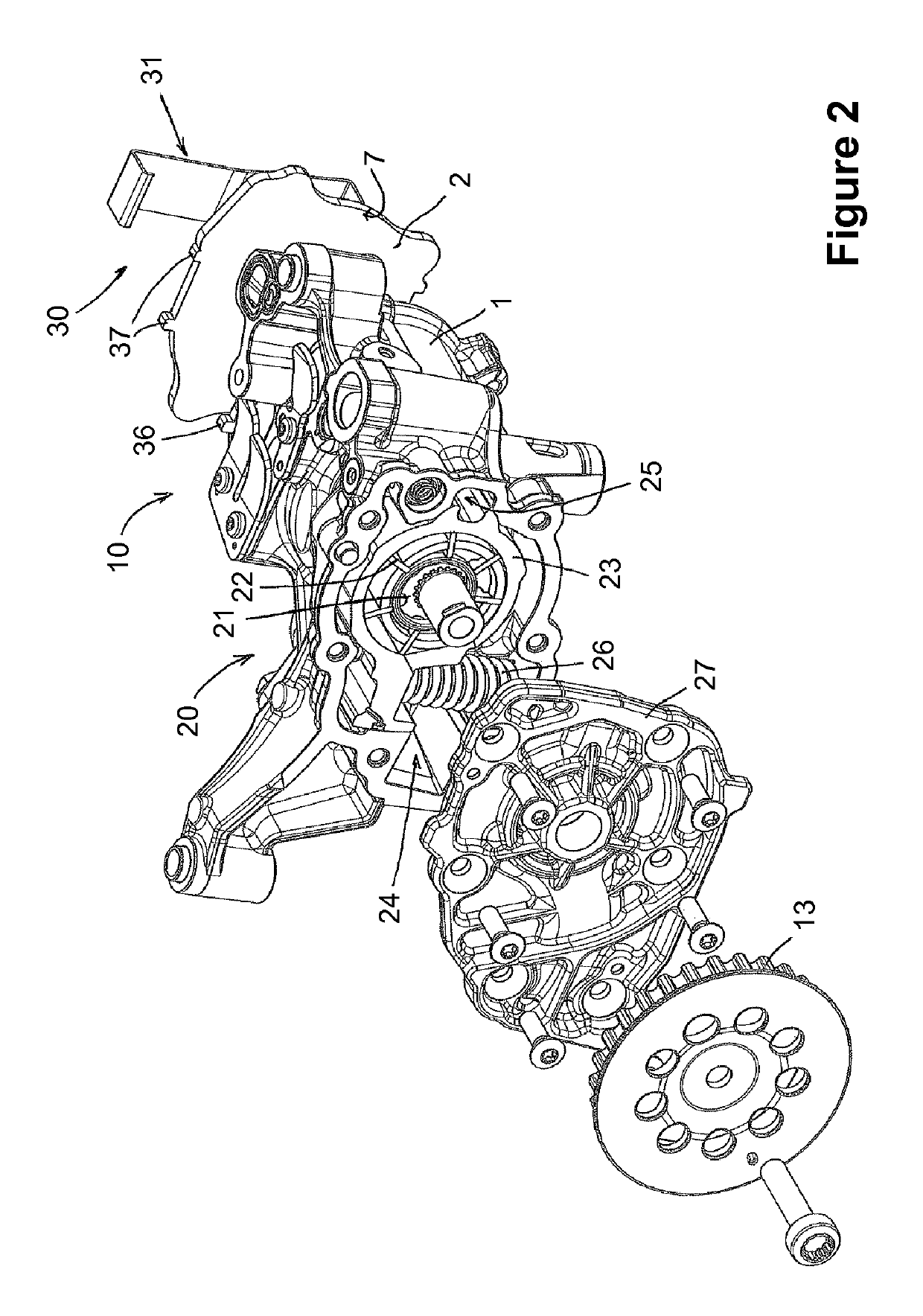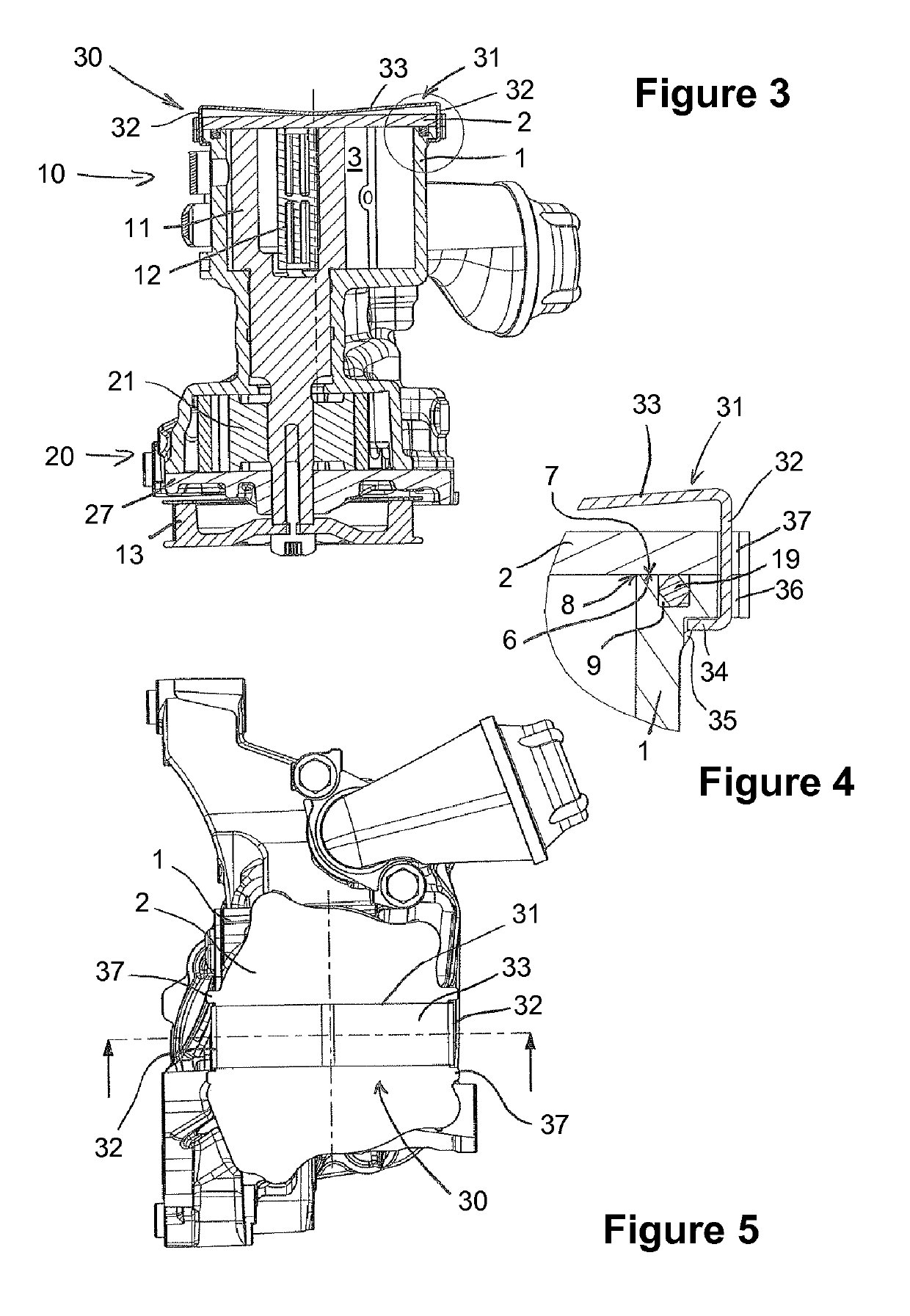Gas pump with pressure relief for reducing the starting torque
a gas pump and starting torque technology, applied in the field of pumps, can solve the problems of high drive torque, dangerous delivery device, and relatively quick delivery
- Summary
- Abstract
- Description
- Claims
- Application Information
AI Technical Summary
Benefits of technology
Problems solved by technology
Method used
Image
Examples
Embodiment Construction
[0051]FIG. 1 shows a pump unit comprising a gas pump 10 of a first example embodiment and a liquid pump 20, in an isometric view onto the gas pump 10. The pump unit comprises a housing which is common to both pumps 10 and 20. Such arrangements of pumps are also referred to as a tandem arrangement. The common housing comprises: a housing part 1 which mounts moving components of the pump unit, in particular a delivery device of the gas pump 10 and a delivery device of the liquid pump 20, such that they can be moved; a housing part 2 which forms a cover of the gas pump 10; and a housing part 27 which forms a cover of the liquid pump 20. The housing part 1 is formed—expediently, cast—in one piece. In principle, however, it can instead also be joined from a plurality of pieces. The housing parts 2 and 27 are each formed from metal in one piece and joined to the housing part 1, for example by means of a screw connection in each case, as shown.
[0052]The gas pump 10 and the liquid pump 20 a...
PUM
 Login to View More
Login to View More Abstract
Description
Claims
Application Information
 Login to View More
Login to View More - R&D
- Intellectual Property
- Life Sciences
- Materials
- Tech Scout
- Unparalleled Data Quality
- Higher Quality Content
- 60% Fewer Hallucinations
Browse by: Latest US Patents, China's latest patents, Technical Efficacy Thesaurus, Application Domain, Technology Topic, Popular Technical Reports.
© 2025 PatSnap. All rights reserved.Legal|Privacy policy|Modern Slavery Act Transparency Statement|Sitemap|About US| Contact US: help@patsnap.com



